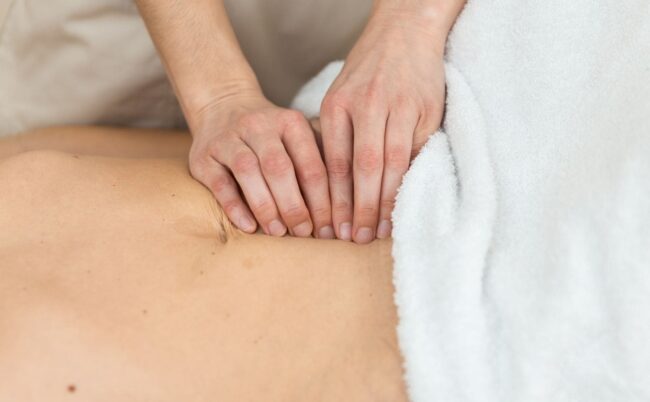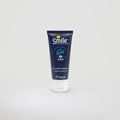Many women struggle to locate their perineum and the same goes for the rectus diastasis. However, these sets of muscles are decisive from the point of view of pelvic health. The pelvis… another intimate area that can be difficult to target! Ladies, know that when we talk about the pelvis, it is roughly the region of your pelvis that we are referring to. This can be impacted by different pathologies, including diastasis, that is to say a excessive separation of the abdominal muscles. Spotlight on this frequent phenomenon that is good to prevent, especially when you are expecting a child.
What is rectus abdominis muscle diastasis?
Also called diastasis recti, diastasis recti refers, as its name suggests, to the right part of the abdomen (the rectus muscle).
The anomaly that occurs is caused by thestretching of connective tissue bringing the abdominal muscles together. Normally maintained in their initial positioning, these form what is called the linea alba ; the white line.

This median line, which runs from the rib cage at pubis, is easier to notice in pregnant women, as it often appears on their tense stomachs. The fact that its trace appears on the skin does not mean that there is a problem.
Note that the separation of the abdominal muscles is considered to be pathological from two centimeters. We then speak of diastasis. In order to detect the occurrence of this – or even the beginning of separation – the diagnosis concerns both visual and sensory perception.
How do you know if you have a diastasis problem?
Physical symptoms of an abdominal tear
On the one hand, the alert signal can come from the physical aspect : a protruding navel, a chubby belly, or a pregnant belly when you are not pregnant, an undefined waist, umbilical hernia.
Concerning this last point, let us specify that it is a small lump at the navel, which may contain fat or intestine. Subcutaneous, it is visible when you are in a standing position and affects both women and men.

Physiological symptoms of rectus diastasis
As for thesensory aspect, the symptoms mainly occur between:
- back pain;
- stomach problems;
- of urinary incontinence ;
- bloating.
It is a medical condition that affects many people but that few people know about. However, if we return to anatomical sources, let us emphasize that we are all born with a diastasis that closes naturally until the age of three, when the nervous system becomes mature.
It is possible that at this age it does not close and that it therefore becomes pathological. It is also possible that it closes, but opens again during childhood, adolescence or adulthood.
When to be particularly vigilant for diastasis?
Diastasis recti during pregnancy
The most critical moment is that of end of pregnancy. This is where the baby weighs all its weight on the sub-abdominal region of the mother-to-be.

As she approaches her 40th week of pregnancy – the classic term – her little one is no longer so small, since it can reach the size of a watermelon. Once “the finish line” is reached, it is a matter of remaining vigilant because childbirth is also generator of diastasis recti disorders.
Postpartum rectus diastasis
Very often, it is during the postpartum that the problem is identified and the diagnosis is made, following a clinical examination carried out by a professional trained in this pathology.
Like pregnancy, significant weight gain can occur stretch the abdominal muscles and it is paradoxically when the excess weight is lost that the pathology begins. Cases of obesity should therefore be monitored.
Risk factors for rectus diastasis
In the same vein, common causes include:
- a pregnancy with a high-weight baby;
- cesarean section;
- multiple pregnancies;
- or even age, which makes muscle tissues less flexible.
More broadly, posture and gestures of daily life can play a deleterious role. Finally, the practicing certain sports, particularly those which involve rotations of the bust such as tennis, boxing or gymnastics, also appear in the dock for certain diastasis.
Intense and repeated activities, based on exercises unsecured abs (plank type, crunches, or crossed movements) are in the same boat.

Ironically, it is precisely through targeted sporting exercises that we can ward off this physiological dysfunction. Before discussing them, focus on the consequences of diastasis.
The health consequences of diastasis recti
In terms of health effects, fat can lodge in the cavity born from the separation of the abdominal muscles. This can be harmful if it accumulates too much.
In view of her delivery, a woman with diastasis will potentially be offered a delivery by cesarean section. An upper birth which can be avoided by practicing the Prekanga exercises® provided for this purpose.

Remember that this is a physical activity specific dedicated to prenatal well-being and, above all, which was designed to prepare the mother's body for the changes induced by pregnancy and prevent post-natal complications.
Depending on the case, diastasis can also lead to abdominoplasty, or to a pelvic floor surgery, cause gastric problems (bloating, constipation), or back pain and, finally, lead to anal incontinence or urinary, as well as in the most worrying cases, a prolapse, or a descent of organs.
So many possible manifestations of diastasis of the great rights which make you want to take action to counteract these evils.

How to treat rectus diastasis?
It is interesting to note that three aspects often go hand in hand in the process of healing of diastasis recti :
- Strengthen the transverse muscle through daily exercises to heal and strengthen the connective tissue and thus promote the maintenance of the rectus muscles in their original position.
- Preserve the rectus abdominis muscles using a specific belt regularly to minimize stretching of the connective tissue.
- Avoid stretching of connective tissue using appropriate postures to integrate into daily life and sporting activity.
1. Pelvic floor and abdominal strengthening exercises
Work with a physiotherapist or a perineal rehabilitation professional may be useful. Specific exercises aimed at strengthen the pelvic floor and abdominal muscles can help reduce muscle separation and promote muscle recovery.

The use of a biofeedback probe like the Emy perineal probe allows active work of the pelvic floor and targeted muscle strengthening. This muscular area is often weakened in cases of diastasis recti, and strengthening can help improve the abdominal stability.
Learn more about the Emy probe
In addition, your healthcare professional will be able to recommend you specific exercises aimed at strengthening the abdominal muscles, with emphasis on reducing diastasis. Exercises such as “hypopressive abs” may be beneficial.
2. Wearing abdominal girdles or corsets
Of the abdominal girdles or corsets specially designed can also be used to support the abdominal muscles and promote their gradual rapprochement. These devices can be worn under the supervision of a healthcare professional.

3. Adapting your posture and physical activity
Adopt good postures, avoid certain exercises that are too demanding on the abdominal area, and practice adapted physical activities may also be recommended to prevent worsening of diastasis and promote healing of a rectus diastasis.





